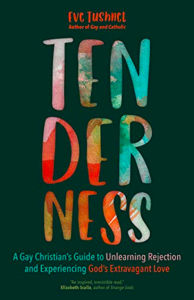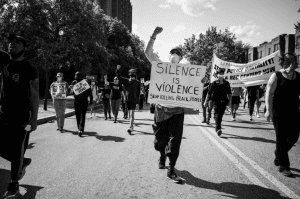Content Warning
This series deals with various types of abuse,
including sexual abuse and abuse perpetrated by clergy.
Please read with caution.
Go here for Part 1.
Define Your Terms

Before we get further into our discussion of abuse, I think it’s important to note a few things that are not abuse. Especially online, words can get thrown around in ways that aren’t really helpful, and can even dilute their power due to overuse—the term “gaslighting” springs to mind.1 Moreover, some of these things are not intrinsically abusive but can be a means of, or a pretext for, abuse. Remember, abuse relies primarily on trust to operate; and trust is a good thing. Its goodness is what makes it dangerous. Predators wouldn’t, and couldn’t, use it to harm if it were not powerful and important.
Confusion and deceit are primary tools of abusers. Making victims think the abuse is normal, yet somehow needs to be secret, is one of the most standard ways predators secure targets and protect themselves. Even the shame victims so often feel is useful to the abuser largely because it muddles the victim’s thoughts. It’s therefore vitally important to be specific and clear about what abuse is and how it really works.
Spoil the Child
First of all, reasonable discipline is not abuse. Parents, teachers, and other authority figures have the right to impose age-appropriate punishments on misbehaving children; the superior in a religious community has a duty to penalize sisters or brothers who violate the communal rule; supervisors in a workplace are there partly to maintain official standards of conduct. It isn’t an abuse of authority to discipline someone for a real offense in a way that’s socially normal, proportionate, and part of your job.

Look at this insolent little shit
This isn’t to say that all discipline is reasonable. Sometimes authorities mistakenly punish an innocent person, for example. And a punishment might be socially normal but, when you think about it, excessive; hanging someone for theft was normal in eighteenth-century England, but it’s pretty obviously not proportionate to the crime. There are problems, even problems with how authority is used, that aren’t specifically abuse.
And, yes, some abusers will claim that what they’re doing is not abuse but a reasonable form of discipline. A rule of thumb for telling the difference is to ask a question about the authority enforcing the discipline: does this increase their power over the person being disciplined, at the expense of the latter’s well-being in the long term? If the answer is “Yes,” then the authority’s behavior is probably abuse. This is especially true if the long-term effects of the authority’s actions infantilize the other person, undermine their confidence, or otherwise make them more dependent on the authority.
Cue Sarah Schulman
Secondly, conflict is not abuse. People disagree sometimes, and sometimes those disagreements are over things that have concrete, immediate implications. Disagreement can be vehement, urgent, and direct without being abusive. An environment in which people cannot disagree is itself probably a sign of abuse; it’s certainly toxic, since it functions to punish truthfulness.
Mis-labeling all conflict as abuse can, in fact, be a tactic of abuse. It makes a group and especially its leaders (formal or informal) immune to criticism and pushback, no matter how reasonable. It can also serve to make critics and outsiders seem like threats when they’re not, which both distorts the dynamic and raises the stakes, making the abuser’s behavior seem more reasonable, whether thanks to the falsified “context” it exists in or just by comparison with the so-called threat. People who have been traumatized themselves are likely, if they abuse, to justify the abuse in self-defensive terms.
Pain and Suffering
Third, causing hurt is not abuse. This is partly because causing pain, even trauma, can be an accident. Triggering past traumas is often unintentional: hence the proliferation of reasonable content warnings.
It’s also because there are some things you cannot get through without hurt. I’ve never heard of a child wanting to get their shots—and doctors and parents often display the textbook abusers’ tactic of doing nice things for the child right after causing them pain, to make up for it! But of course the pain of shots is not the point; we would avoid it if we could, and their long-term purpose is to protect the child’s health, not prop up parental or medical authority.

Even causing pain vindictively need not be abuse per se. People who are equals, with no real power over each other, may well be spiteful, but they aren’t in a position to be predatory—though that dynamic can change if one of them does receive some kind of power.
The Sharp Edges of Ideas
Lastly, ideas are not abuse. This one requires some very delicate handling for several reasons.
For instance, ideas absolutely can be toxic, and they can be used by predators. But an idea, even a toxic idea, is not itself abuse; at most, it is a tool at the disposal of abusers. Their behavior is their own responsibility, and must not be fobbed off onto doctrines.
It’s also vital to note that an idea does not need to be false to be made into an abuser’s tool. What it needs is a context in which it can do damage. Labeling any kind of behavior wrong, for instance, can be done in a way that undermines a person’s self-worth and confidence—because all of us have done things that are wrong. A skilled abuser can tap into feelings of guilt and use them to manipulate, and this has nothing to do with whether those guilt feelings are appropriate.

Certain elements of the Christian religion are specially susceptible to abuses. The fact that Christianity tells us to forgive is a great example. Forgiveness is an exceedingly difficult thing to do, both because we naturally resent being hurt and because it involves a delicate balance of things we don’t usually combine: recognizing and condemning an injustice against ourselves, and desiring what is best for the person who did it. Predators in positions of religious authority, if they admit any wrongdoing at all, will almost always tell their victims that they have to forgive; the fact that forgiveness is compatible with seeking reasonable redress is normally left out. The fact that it is bad for the predator to be allowed to continue preying on people practically never comes up.
Whodunit
All this may make abuse sound really difficult to identify. It can be. All the more reason to educate ourselves about what it is and how it works.
A key part of that education is understanding who can abuse. We have a kind of cartoon idea of an abuser in our minds, or a small range of such cartoons—the raging alcoholic father who lives in a trailer, the cruel black-habited nun with a ruler, the whiskered creep with a van full of candy. We half-realize that these aren’t realistic depictions of abuse (though they do happen), but is there a more helpful way to think about that question: Who can abuse?
Continued in Howls and Hirelings, Shame, Shame, and Saint Disney.
1“Gaslighting” is often treated like a mere synonym for “lying,” especially online. Properly speaking, gaslighting is a kind of psychological abuse in which the gaslighter not only lies to the victim, but tries to break down their trust in their own reasoning and perceptions.
















